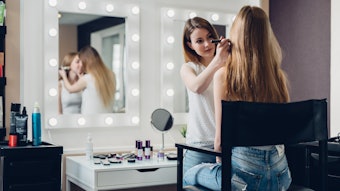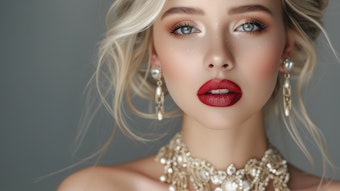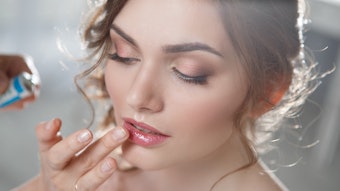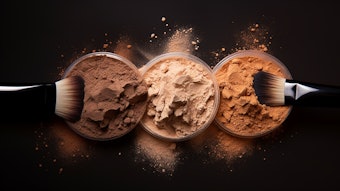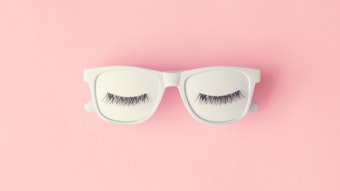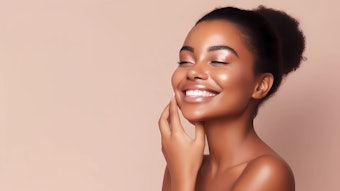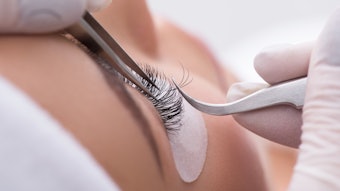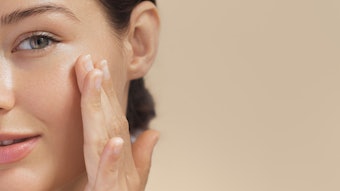From London to New York, Fashion Week draws not only fabled editors and flashy starlets, but also the decision-makers from major cosmetic houses—with good reason. The fashion industry powers color cosmetic trends: vivid red lipsticks emerged when the clothing trends were bold; when metallics were in, chemists scurried to create shimmering gold bronzers; and now that neutral pastels are back, the coming season’s makeup palette will feature earthy tones.
When it comes to the ingredients within these products, however, it is consumer opinion that matters the most. And, as far as they’re concerned, “green” is the new black. At the same time, the consequences of going natural have chemists and manufacturers divided about whether the customer truly knows best.
Pros and cons
The popularity of natural cosmetics has fluctuated throughout the years, but lately has gained momentum. “People want things more organic, more green,” says Marilyn Patterson, owner of Natural Cosmetics Solutions, Inc. Natural products are thought to be purer than synthetic, says the consultant from Acton, Ontario, Canada, and it’s also a reflection of the larger societal movement toward all things organic. Whatever the reason for the shift, going green isn’t easy—especially when it comes to color. The more intense the shade, the greater the need for man-made ingredients.
“You can have natural face powders, but you can’t do much with the eye shadows and lipsticks,” says James DiGiovanna, owner of Deer Park, New York-based Color by DiGiovanna, who has worked in the cosmetic industry for 32 years. This is because the dramatic shades often found in these kinds of cosmetics are unlikely to occur naturally. Yet, even with the obvious restrictions on color, cosmetic companies are bowing to the trend by reducing—or even eliminating—synthetic preservatives and animal-derived ingredients.
Preservative-free phenomenon
Because few preservatives occur naturally, “preservative-free” is a buzzword that is becoming more and more popular. Although the lack of synthetic preservatives isn’t harmful in and of itself, deciding whether or not to use them often has its pros and cons. “People don’t like preservatives because they are sensitizers,” Patterson explains. But without them, she adds, natural oils tend to go rancid, dramatically reducing the product’s shelf life. Its longevity depends largely upon how it is packaged, says Rob Trow, CEO of DermaConcepts USA in Mashpee, Massachusetts. When placed in an airtight bottle, preservative-free products can last from nine to 18 months, as opposed to the three- to five-year shelf life of products containing preservatives.
A shorter shelf life is not always a disadvantage. In fact, DiGiovanna says it can be a good thing for manufacturers and suppliers who would prefer housing lesser inventory. “They don’t make a year’s worth of products anymore,” he says. “People now just make and sell.” For Trow’s company, this promotes efficiency; he delivers his skin care line to medical spas and physicians upon request, instead of engaging in the lengthy distribution chain that necessitates a longer shelf life.
The paraben debate
As the shift from preservatives intensifies, parabens have become the most controversial of the lot. Found in almost all cosmetics, they keep products sanitary by killing bacteria, yeast and fungi that cause contamination. DiGiovanna believes that they also can be major irritants, affecting those with sensitive skin. Online studies also have published similar claims, even fueling rumors that the preservatives might be carcinogenic, causing breast cancer in women.
But the move against parabens is unsubstantiated, says Patrick Obukowho, a chemist with 18 years of experience in the cosmetic industry, and owner of Advantage Research Lab in Woodbridge, New Jersey.
“There is nothing wrong with parabens,” says Obukowho, who notes that the percentage of parabens in most cosmetics is less than 0.1%. “If the industry is walking away from them, then I don’t know why.”
Patterson agrees. Although her company only uses natural ingredients, she says parabens—which can occur naturally—are relatively safe. “All it takes is for 10 people to write about it on the Internet and it is a hot topic,” Patterson says. “There’s a lot of misinformation out there and it just drives the industry.”
Parabens carry such stigma that even cosmetic companies are quick to mention that their products are paraben-free. For some, the potential carcinogenic hazard has been reason enough to steer clear. “If it smells like a duck and looks like a duck, it is a duck,” Trow cautions. “I would rather not take the chance.”
Large-scale manufacturers will have an easier time transitioning away from parabens, DiGiovanna explains, because their close-to-sterile environments are less likely to harbor contaminants.
Nick Morante, owner of Holbrook, New York-based Nick Morante Cosmetic Consultants, warns that the greatest risk occurs outside the labs, when the product has reached consumer hands. Because they are more susceptible to contamination, these products may actually cause infections, even if the U.S. Food and Drug Administration has labeled them safe for use, Morante says. Although paraben-free cosmetics may not be harmful, completely eliminating preservatives is a move that can hurt consumers more than it helps them, he adds.
“Preservative-free is a problem for me because ‘safe-for-use’ can mean a number of things,” Morante says. “We have to protect the product from the outside world—that’s what damages it.”
Going green
When deciding whether or not to go natural, spa owners have to candidly consider which products best suit their clientele. For example, Marvin Westmore, president of Westmore Academy of Cosmetic Arts in Burbank, California, believes that straying from synthetic-based products is not even an option for his business. During his 45-year-long career, he has found that the most intense shades come from the cosmetics that contain synthetic and animal-derived products. Westmore has seen his share of fads come and go.
“This is not the first time this interest in preservative-free makeup has happened,” Westmore says. “These are cyclical movements and they are exciting to the new generation.”
On the other hand, if a spa embraces the organic philosophy and caters to this new generation, it only follows that providing preservative-free products might be a viable option. You must also consider the economic impact such a move might make. Patterson notes that natural cosmetics are extremely expensive to produce because the ingredients are limited and the preparation techniques are more time-consuming. These production costs eventually trickle down into the final price of the finished product, but can normally be offset by clients who are willing to pay for a lifestyle about which they are passionate.
When it comes to the ingredients within these products, however, it is consumer opinion that matters the most. And, as far as they’re concerned, “green” is the new black. At the same time, the consequences of going natural have chemists and manufacturers divided about whether the customer truly knows best.
Pros and cons
The popularity of natural cosmetics has fluctuated throughout the years, but lately has gained momentum. “People want things more organic, more green,” says Marilyn Patterson, owner of Natural Cosmetics Solutions, Inc. Natural products are thought to be purer than synthetic, says the consultant from Acton, Ontario, Canada, and it’s also a reflection of the larger societal movement toward all things organic. Whatever the reason for the shift, going green isn’t easy—especially when it comes to color. The more intense the shade, the greater the need for man-made ingredients.
“You can have natural face powders, but you can’t do much with the eye shadows and lipsticks,” says James DiGiovanna, owner of Deer Park, New York-based Color by DiGiovanna, who has worked in the cosmetic industry for 32 years. This is because the dramatic shades often found in these kinds of cosmetics are unlikely to occur naturally. Yet, even with the obvious restrictions on color, cosmetic companies are bowing to the trend by reducing—or even eliminating—synthetic preservatives and animal-derived ingredients.
Preservative-free phenomenon
Because few preservatives occur naturally, “preservative-free” is a buzzword that is becoming more and more popular. Although the lack of synthetic preservatives isn’t harmful in and of itself, deciding whether or not to use them often has its pros and cons. “People don’t like preservatives because they are sensitizers,” Patterson explains. But without them, she adds, natural oils tend to go rancid, dramatically reducing the product’s shelf life. Its longevity depends largely upon how it is packaged, says Rob Trow, CEO of DermaConcepts USA in Mashpee, Massachusetts. When placed in an airtight bottle, preservative-free products can last from nine to 18 months, as opposed to the three- to five-year shelf life of products containing preservatives.
A shorter shelf life is not always a disadvantage. In fact, DiGiovanna says it can be a good thing for manufacturers and suppliers who would prefer housing lesser inventory. “They don’t make a year’s worth of products anymore,” he says. “People now just make and sell.” For Trow’s company, this promotes efficiency; he delivers his skin care line to medical spas and physicians upon request, instead of engaging in the lengthy distribution chain that necessitates a longer shelf life.
The paraben debate
As the shift from preservatives intensifies, parabens have become the most controversial of the lot. Found in almost all cosmetics, they keep products sanitary by killing bacteria, yeast and fungi that cause contamination. DiGiovanna believes that they also can be major irritants, affecting those with sensitive skin. Online studies also have published similar claims, even fueling rumors that the preservatives might be carcinogenic, causing breast cancer in women.
But the move against parabens is unsubstantiated, says Patrick Obukowho, a chemist with 18 years of experience in the cosmetic industry, and owner of Advantage Research Lab in Woodbridge, New Jersey.
“There is nothing wrong with parabens,” says Obukowho, who notes that the percentage of parabens in most cosmetics is less than 0.1%. “If the industry is walking away from them, then I don’t know why.”
Patterson agrees. Although her company only uses natural ingredients, she says parabens—which can occur naturally—are relatively safe. “All it takes is for 10 people to write about it on the Internet and it is a hot topic,” Patterson says. “There’s a lot of misinformation out there and it just drives the industry.”
Parabens carry such stigma that even cosmetic companies are quick to mention that their products are paraben-free. For some, the potential carcinogenic hazard has been reason enough to steer clear. “If it smells like a duck and looks like a duck, it is a duck,” Trow cautions. “I would rather not take the chance.”
Large-scale manufacturers will have an easier time transitioning away from parabens, DiGiovanna explains, because their close-to-sterile environments are less likely to harbor contaminants.
Nick Morante, owner of Holbrook, New York-based Nick Morante Cosmetic Consultants, warns that the greatest risk occurs outside the labs, when the product has reached consumer hands. Because they are more susceptible to contamination, these products may actually cause infections, even if the U.S. Food and Drug Administration has labeled them safe for use, Morante says. Although paraben-free cosmetics may not be harmful, completely eliminating preservatives is a move that can hurt consumers more than it helps them, he adds.
“Preservative-free is a problem for me because ‘safe-for-use’ can mean a number of things,” Morante says. “We have to protect the product from the outside world—that’s what damages it.”
Going green
When deciding whether or not to go natural, spa owners have to candidly consider which products best suit their clientele. For example, Marvin Westmore, president of Westmore Academy of Cosmetic Arts in Burbank, California, believes that straying from synthetic-based products is not even an option for his business. During his 45-year-long career, he has found that the most intense shades come from the cosmetics that contain synthetic and animal-derived products. Westmore has seen his share of fads come and go.
“This is not the first time this interest in preservative-free makeup has happened,” Westmore says. “These are cyclical movements and they are exciting to the new generation.”
On the other hand, if a spa embraces the organic philosophy and caters to this new generation, it only follows that providing preservative-free products might be a viable option. You must also consider the economic impact such a move might make. Patterson notes that natural cosmetics are extremely expensive to produce because the ingredients are limited and the preparation techniques are more time-consuming. These production costs eventually trickle down into the final price of the finished product, but can normally be offset by clients who are willing to pay for a lifestyle about which they are passionate.

